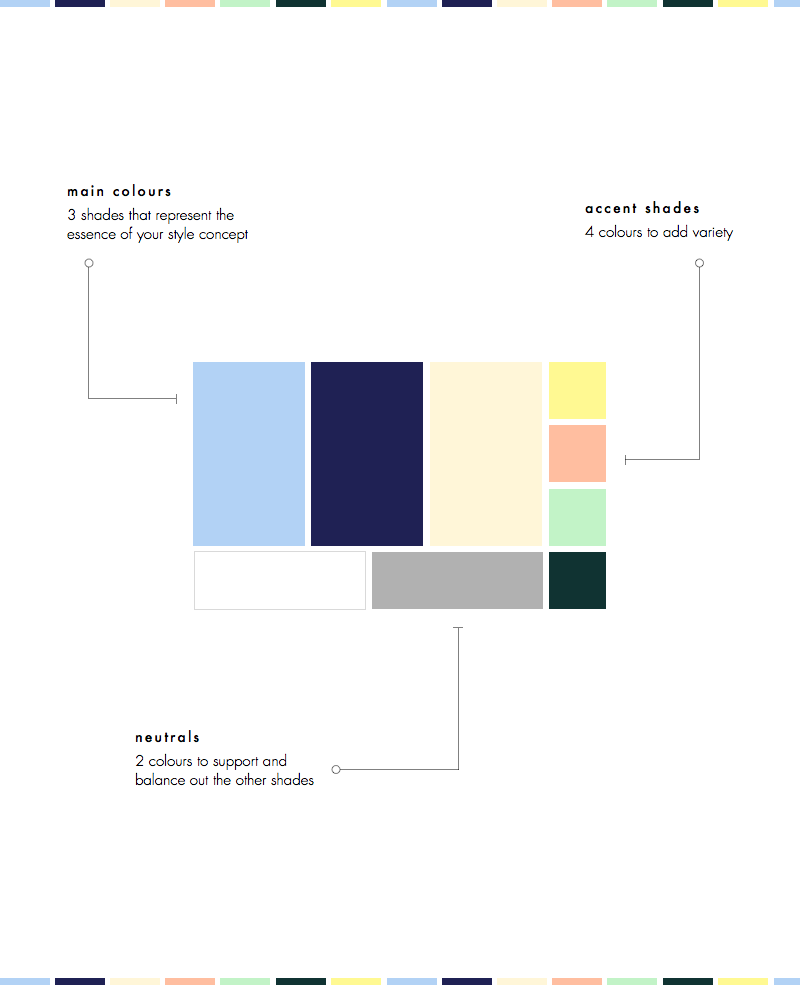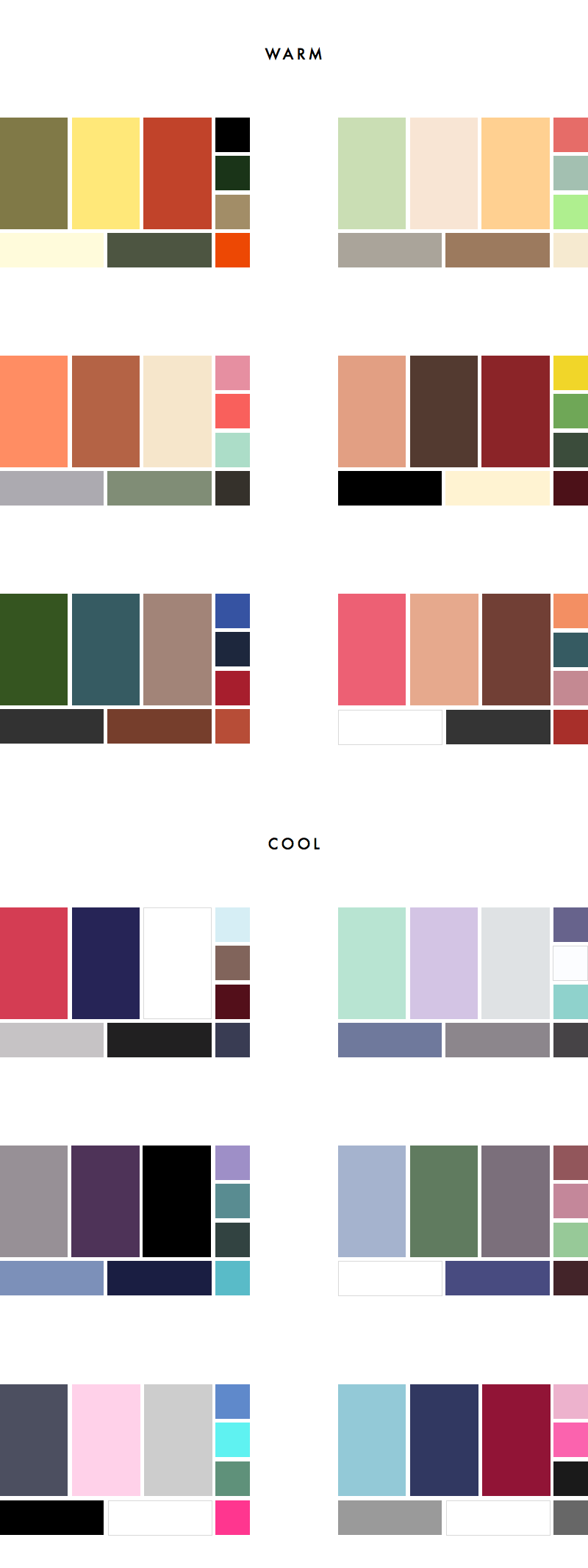How to choose a colour palette for your wardrobe (+ 36 sample palettes)
If you are a regular reader of INTO MIND, you'll know I talk about colour palettes a lot! That's because I think they are one of the most effective tools for building a wardrobe that a) expresses your unique personal style and b) is 100% versatile and easy to mix and match. An easy (and fun) shortcut to both form and function.
Now, in my very first post about colour palettes I wrote mostly about the form aspect: how to develop a colour palette based on your colour preferences step-by-step. In today's post I want to give you a few more tips and examples for the functional side of colour palettes: how to make them practical, wearable and helpful to your process.
This post has two parts: Part I is about the three qualities a colour palette needs to be practical and how to tweak your existing palette to make it more versatile. In part II I'll then show you 36 complete sample colour palettes, ranging from neutral to colourful.
Part I // Building a versatile colour palette
Step number one to building a great colour palette is always to become aware of your own colour style: Which colours do you naturally gravitate towards, which do you want to include in your style concept? Let's assume you have already done this step (read this, this or this post if you need help) and are left with a set of colours that all express your personal style. How do you then decide which colours to use as your main colours, neutrals and accent shades, and which to leave out completely? My suggestion is that you first build a palette that best represents your style concept and that you love at first sight. Then, as a second step you put your palette to the test: Is it wearable, mixable and varied enough? Use the pointers below to tweak your first selection of colours into something that's both expressive AND functional.
Note: I generally recommend aiming for a 9-shade colour palette: 3 main colours, 2 neutrals and 4 accent shades, and will be using that model for all examples in this post. You can of course adjust the numbers however you want!
Is your palette wearable?
The number one thing you want to avoid is choosing a palette that's nice to look at but not wearable. I may love all shades of orange and yellow, but I know that except for a few brighter accent shades here and there, I prefer a neutral colour palette for my outfits.
For each colour in your palette, ask yourself: Do I actually want to wear this shade and if so, in what doses? An easy test for this is to imagine the types of items that could potentially be a part of your capsule wardrobe, should you implement the colour palette in question:
- MAIN COLOURS Your main colours should be ones that you can see yourself wearing A LOT, and that would work especially well for your key pieces, like jackets, shoes, trousers, coats, etc.
- NEUTRALS Pick neutral colours that would suit your basics, i.e. simple tops, trousers, cardigans, etc. Black, white, cream, tan, and all shades of brown and grey are obvious choices, although any other shade that creates a neutral (duh) canvas is also good, like a muted light blue for example.
- ACCENT COLOURS Accent colours should work for accessories and single items, like tops or skirts, that you would pair with your key pieces or basics.
Are the colours mixable?
If your goal is to build a compact versatile capsule wardrobe, the individual colours in your palette should be as mixable as possible, to maximise the number of outfits you can build. Again, the best way to check whether your palette is mixable enough, is to do a little thought experiment and consider a few possible colour pairings. Ideally, your colour palette should fulfil these criteria:
- NEUTRALS You want your neutrals to be able to act as a blank canvas for the rest of your colours, so each of your two neutrals should go with every other shade of your palette.
- ACCENT SHADES Each accent colour should work with each neutral and at least two of your main colours. Bonus points if they go with each other as well.
- MAIN COLOURS Each main colour should should work with each neutral, each other main colour and at least two accent shades.
If your colour palette ticks all of these boxes and makes you instantly think of lots of different outfits or colour pairings you could wear, you’re on the right track!
Is your palette varied enough?
Having a closely defined colour palette does not mean being confined to the same exact look each day. A well-chosen colour palette should give you plenty of variety, yet still express the overall theme you are going for.
Now, the meaning of 'variety' will differ from person to person. If you know you want lots of options, make sure you choose a range of different (ideally complementary) hues for your accent colours, as well as a mix of light, medium and deep shades for extra contrast. If you prefer a less varied palette instead, try including a few colours that share roughly the same hue but differ in brightness or saturation, e.g. a deep purple and a mid-tone purple. Regardless of which colours you choose, at the end always double check that your palette is cohesive overall, to simplify mixing and matching. Check out How to pair colours: A short intro to colour theory for more tips on how to add/reduce both the contrast and the cohesion of your palette.
And remember: Colour palettes are not meant to restrict you but help you build a wardrobe that is in tune with your unique personal style. There’s no need to spend ages hunting down items that fit the exact shade in your colour palette and the goal also isn't to solely own items in those colours. Simply use your palette as a guide to help you build better outfits and make sure any new items fit the overall vibe of your style and will work well with the rest of your wardrobe.
Part II // 36 Sample Colour Palettes
Here are 36 sample colour palettes, divided into 6 groups: warm, cool, neutral, colourful, light and deep.





